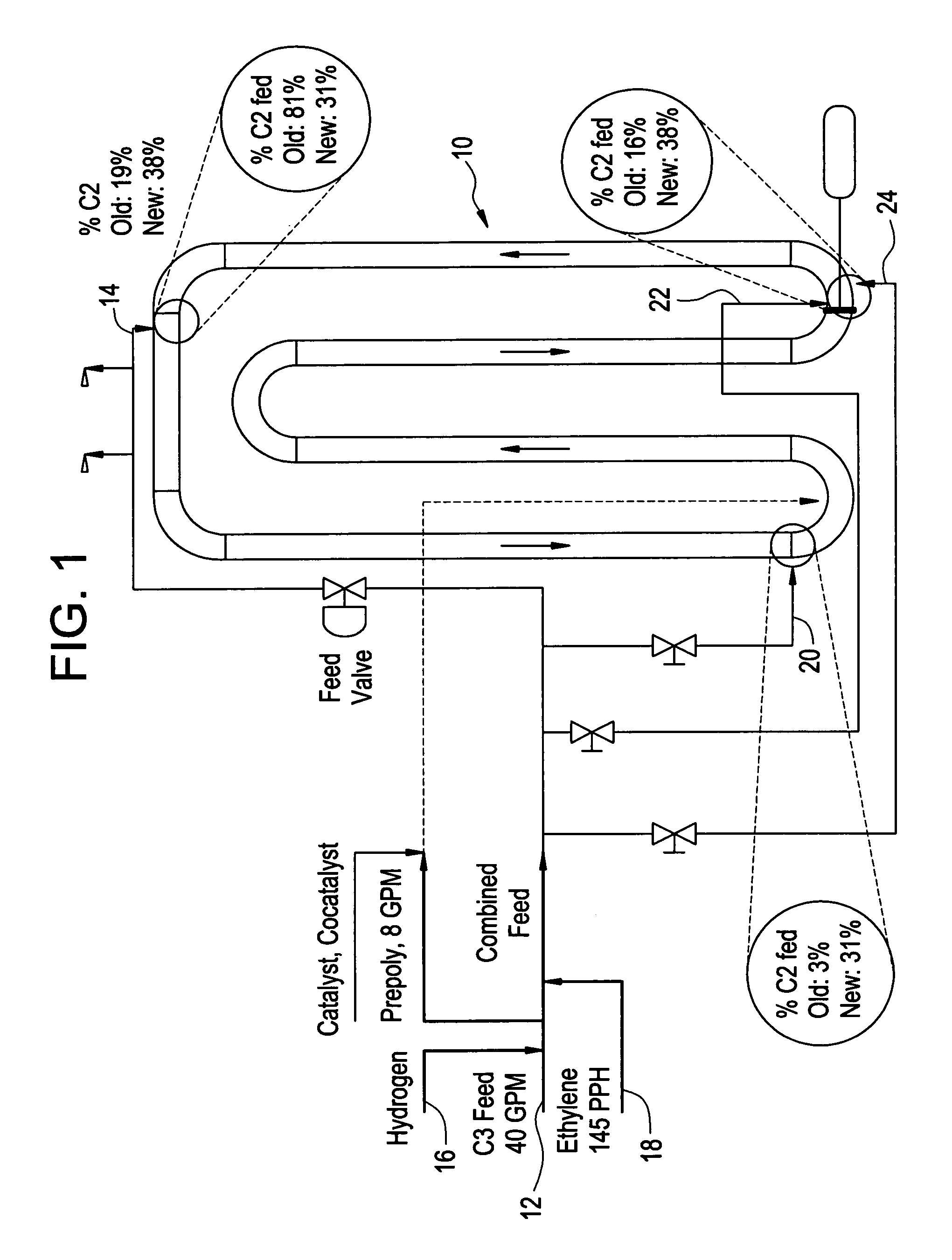Controlled comonomer distribution along a reactor for copolymer production
a technology of copolymer and reactor, which is applied in the field of random copolymer production, can solve the problems of reducing the crystallinity of the overall polymer, affecting the growth of thick crystalline structures, and increasing the circulation power (amps)
- Summary
- Abstract
- Description
- Claims
- Application Information
AI Technical Summary
Problems solved by technology
Method used
Image
Examples
Embodiment Construction
[0019]The present invention relates to an improved production of copolymer of propylene with enhanced properties, particularly a method that has reduced stickiness of the soft materials, namely the copolymer fluff grains. This improved process would reduce the tendency of the fluff to agglomerate and reduce the possibility that circulation power would undesirably increase and also reduce the possibility that valves would be blocked by severe agglomeration, or relatively large and troublesome accumulations informally termed “rocks”. Indeed, when copolymer fluff granules become too large, they create noise while circulating through the reactor and when they contact the mixing paddle, sounding similar to what gravel may sound like.
[0020]In the process herein, the olefin comonomer (e.g. ethylene) distribution would be expected to be steadier or more uniformly distributed among both inter- and intramacromolecules, thus providing lower organoleptic content. Organoleptic considerations ref...
PUM
| Property | Measurement | Unit |
|---|---|---|
| melting point | aaaaa | aaaaa |
| melting point | aaaaa | aaaaa |
| surface area | aaaaa | aaaaa |
Abstract
Description
Claims
Application Information
 Login to View More
Login to View More - R&D
- Intellectual Property
- Life Sciences
- Materials
- Tech Scout
- Unparalleled Data Quality
- Higher Quality Content
- 60% Fewer Hallucinations
Browse by: Latest US Patents, China's latest patents, Technical Efficacy Thesaurus, Application Domain, Technology Topic, Popular Technical Reports.
© 2025 PatSnap. All rights reserved.Legal|Privacy policy|Modern Slavery Act Transparency Statement|Sitemap|About US| Contact US: help@patsnap.com



